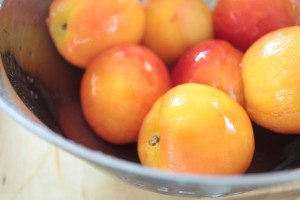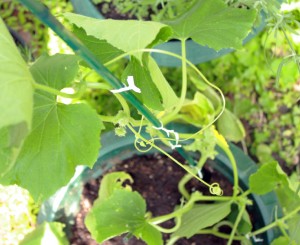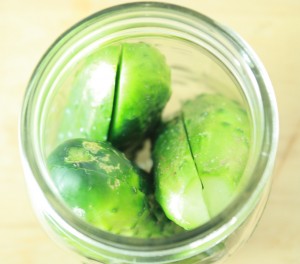A few years ago, when I had just started canning, a neighbor passed on a recipe from the 1951 New York Times for brandied peaches. I make them every year, and they make a great gift, or a nice addition to many meat-based dishes.
You’ll need a stock pot to blanch the peaches, a cold water bath in a large mixing bowl, clean jars with lids and a pot to process the jars in a water bath. These instructions assume you through processing 3 lbs of peaches, but you can easily scale this recipe.
Take each peach and use a paring knife to cut a shallow X on the bottom of the peach.
Blanch the peaches for 1 minute in boiling water, and immediately submerge in the ice water bath.
Remove the skins, which you can do easily by hand after they are blanched.
Cut the peaches into quarters or slices, removing the pits, and place in clean jars.
Take 3 cups of the blanched water, add 3 cups sugar, and bring to a boil (for scaling, you’ll need equal parts sugar/water and about 1 cup of each per pound of peaches). Stir will wooden spoon until sugar dissolves, just a minute or two. I add the peach skins to this syrup while its boiling and then strain for extra flavor, but this is optional.
Pour syrup over jarred peaches, filling about 2/3rd of the glass below the headspace. Top off with brandy. Remove any air bubbles, wipe rims and add lids and bands.
Process in a hot water bath for 20 minutes, or in a pressure canner at 15 psi for 11 minutes. Allow to cool completely, store in a cool dark place.
So, what to do with all these jars, assuming you keep a few for yourself (and you should)? Pull them out on a cold winter night with some pork chops, a cup of chopped nuts, and a bit of extra brandy.
Pan sear the pork chops on high heat in a bit of olive oil, reduce heat to medium temp, and cook until internal temp reaches 170F (the time will depend on how thick your chops are). Add nuts (hazelnuts or walnuts work well for this) and 1/3 cup brandy. Slowly dip one side of your saute pan towards the burner, allowing the brandy to catch fire. Right the pan, allow flames to finish. Don’t worry, the flames only last a few seconds, but will feed your inner pyro for much longer. If you’ve got an electric stove, you could use a long, lit match to flambe the chops.
I served the pork chops with some wheatberries and a steamed artichoke. Put those peaches right on the plate with the chops.
Maybe some day I’ll stop canning every little thing in booze (peaches! cherries! watermelon rinds!), but canning and liquor are two things I adore, so I see no reason to stop. In fact, I’ve been starting to infuse liquors and cordials, which requires less fruit and more booze. So bottoms up, or even better, fill your jars!




































